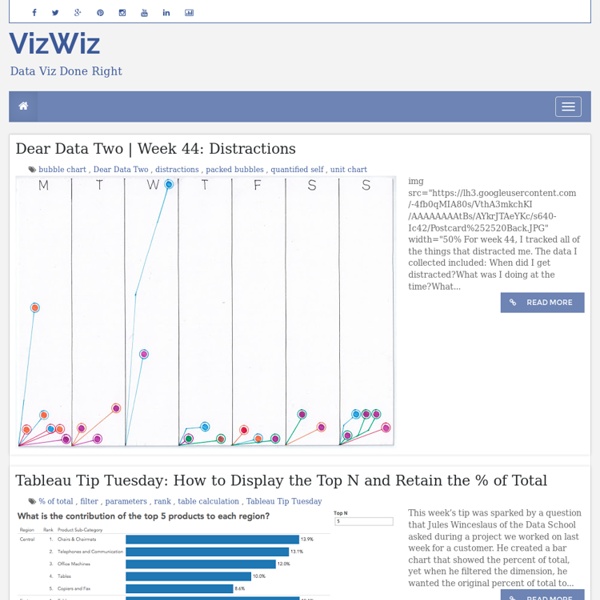



DataRemixed 3 Creative Ways To Visualize Urban Public Transportation As cities gradually realize that opening up their data isn’t dangerous, we’re starting to see creative applications for the information that not too long ago was siloed off by government agencies. The Urban Data Challenge (where I was a judge), asked entrants to use open transportation data sets from three cities--San Francisco, Zurich, and Geneva--to create beautiful and insightful visualizations. These were the three winners of the competition, put on by Swissnex, the Grey Area Foundation for the Arts, LIFT, and others. Dots on the bus This project, which won the grand prize ($5,000 from Fusepool to develop an app), was the most entertaining entry of the bunch. There are a lot of data sets behind this visualization, including bus timing, the number of people who get on and off at each stop as determined by on-board lasers, and the location of each stop and route. Transit Quality and Equity Frustration Index See all the other winners and honorable mentions on the Urban Data Challenge site.
Tableau Pills: Measures and Dimensions | InterWorks, Inc. This is the first in a three part series related to the four types of pills in Tableau. The four pill types are discrete dimension, continuous dimension, discrete measure, and continuous measure. Grasping these concepts is important to understanding Tableau and relational databases in general. This article will specifically focus on explaining the less intuitive concepts of non-numeric measures and numeric dimensions. For a more in-depth discussion of the basic properties of dimensions and measures, see the Tableau software online help. Measures Measures are the result of a business process event. Looking at the Superstore Subset Excel data included in Tableau, we see numeric (indicated by the # icon to the left of the variable name) data in both the Dimension and Measure section of the data window. Notice that the numeric measure variables such as Order Quantity, Profit, and Unit Price are all quantities that can be measured by observation. Dimensions Non-Numeric Measures
A visual and interactive experiment on the Parisian underground network Drawing with Numbers | Thoughts on data visualization and Tableau The Information Lab - Tableau Software UK Gold Partner Understanding Table Calcs using Index() - The Information Lab I’ve been a Tableau user for two years now. Since joining The Information Lab a few weeks ago I decided it was about time I stopped being scared of table calculations and started understanding them more. One of the biggest hurdles of table calcs is understanding just what they are doing with your data and what the difference between using a Table (across), a Pane (across) or any of the other ‘compute using’ options is. How Tableau computes table calculations When we select a table calc, Tableau first queries our data source (whether that be a database connection, extract, or spreadsheet). Okay, so now we have a brief understanding of what Tableau is doing to create a table calc, let’s go ahead and connect to Superstore Sales in Tableau Desktop and start creating some table calcs. I’ve placed Year and Month of Order Date on the columns shelf, and Sum of Sales on rows. So, pretty straight forward here. Create a new calculated field with the following: Okay, let’s mix things up a bit
Jewel Loree » Pop Viz: America’s Regional Tastes December 17, 2013 When Allrecipes reached out to Tableau to create a dashboard about Thanksgiving recipe trends, I was salivating… not just because of all the appetizing recipes but because this is some deliciously juicy data! The Allrecipes data team (shout out to my man Bob, who is awesome!) provided me with data on page views for Thanksgiving recipes broken up by state (based on IP address) and category (turkey, stuffing, pie, etc.). Here’s the viz: It was a super fun viz to make and I learned some useful techniques via my own personal Tableau master and desk neighbor Dan Hom about the new 8.1 ranking feature. The Map Obviously, the main feature of this viz is the map. Write the calculations for Rank and for hiding everything but #1. The category selector I really like using icons as buttons for filters. I grabbed the icons from a set of food icons in Smashing Magazine. The Top Recipe box There are actually three sheets going into this section of the viz and an image. The Table
Tableau Love As a “Friday afternoon fun project” I decided to tinker around a little bit with Tableau on Amazon Web Services EC2. Then bad Russell arrived in my head and kept on asking questions. A weekend later, I find that I’ve stood up and banged on about 20 distinct EC2 instance configurations. In this two-parter, I’ll let you know what I found. The Goal Understand HOW Tableau behaves on EC2. Not the Goal Create prescriptive guidance on the instance type and storage subsystem you should stand up for various sizes of Tableau Server. What I did I decided that my “base” dashboard should be an interesting one. Viz One plots the trade price of a couple hundred equities across time (quarter) and trade sizeViz Two plots the trade price for two securities across time on a daily basis On my main workstation I see the following results: Cold Load: 17 secCached Load: 15.4 sec My Mac (jealous much?.. Cold Load: 24 secCached Load 11 sec Windows Running on Mac (Parallels): Cold Load: 16.25 secCached Load: 14.55 Ready?
Fonseca Data Science | Leigh Fonseca's Explorations in Data